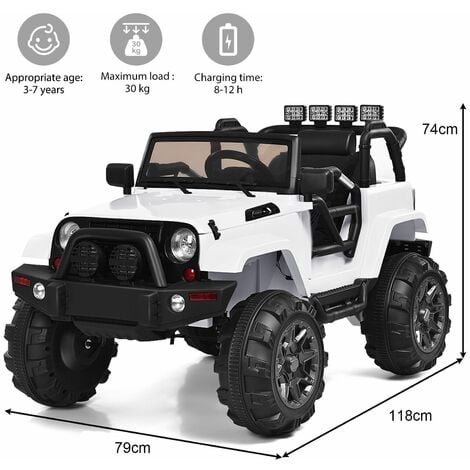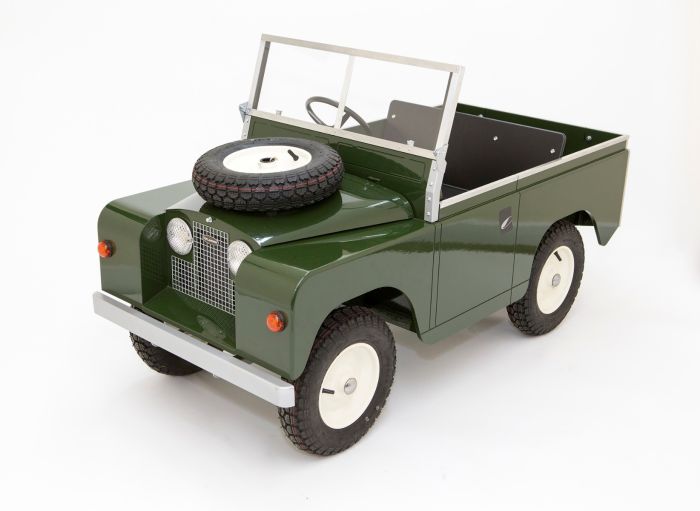Top Facts For Deciding On Electric Kids Cars
Top Facts For Deciding On Electric Kids Cars
Blog Article
What Should You Look For In Ride-On Cars For Older Children?
It is important to take into consideration the age, size and development level of your child when deciding an appropriate ride-on car. This will ensure that they're secure and have fun with the ride. Here's how to think about these elements: Age and size
The ride-on vehicle should be designed specifically for the stage of your toddler. They are typically low to the ground, with simple controls and features like steering wheels and buttons, or levers. Pick ride-ons with a substantial base to ensure stability, and a very low chance of tipping.
Older Children (3and older) - As your child ages is expected to be able to operate more advanced rides with added features and controls. Look for cars that have an adjustable seat with a larger weight capacity and more interactive functions like lights, sounds or music. To ensure your safety, look for vehicles with an adjustable speed or parental control to meet the needs of different skill levels.
Size
Weight and height - when choosing the appropriate ride-on one, you must think about your child's size and weight. Select a car with an appropriate seat weight and the height that comfortably fits your child. Avoid vehicles that are either too large or too small, because they can create a risk of discomfort or even danger for your child to ride.
Comfort and Legroom - Be sure that the vehicle you ride in offers enough legroom so that your child can sit in an enjoyable seat. Check that the seat area is suitable to your child's.
Developmental Stage -
Motor Skills – When choosing the best ride-on for your child take into consideration your child’s motor skills and their ability to coordinate. While toddlers of a younger age will require more control to operate the car, older kids are able to manage more complicated controls and interactive features.
Confidence and independence. Ride-on cars can help develop independence and confidence as children learn how to steer and control the vehicle. Select a vehicle that gives your child to build their motor skills, as well as their confidence through practicing steering, acceleration and braking on their own.
When choosing a ride-on vehicle, consider your child's preferences and preferences and. Select a car with specific features, themes or colors that appeal to your child. It might be a classic sports car or truck.
Consider your child's size and age, as well as their developmental stage to select a vehicle that is safe, comfortable, and fun. It will be a great place for hours of learning and fun for your child as they play and explore. Take a look at the top McLaren kids car for more tips including car toy car toy, toy the car, car for toy, childrens electric cars, remote control childrens electric cars, toy ride, toy with car, toy cars, electric car ride, toy a car and more. . 
What Assembly And Maintenance Is Needed For The Child's Car Ride-On?
The ride-on vehicles for kids typically need periodic maintenance and assembly to ensure their performance is optimal as well as safety and longevity. Here are the assembly and maintenance requirements for children's ride on cars.
The majority of ride-on vehicles are assembled and require some assembly on their arrival. Attaching the wheel, steering wheel seats, as well as other parts to the ride-on car as per the directions from the manufacturer is the most common method.
Assemble the parts according to the instructions. Use the tools and other hardware to complete assembly.
Cleaning -
To allow the vehicle to look the best and work effectively, regular cleaning is necessary. Use a soft sponge, or cloth that has been dampened with mild soap and water to wash exterior surfaces.
Be aware of areas that are prone to accumulation, such as the tires, wheels and undercarriage. Make use of a toothbrush or a brush to scrub hard-to-access places and get rid of stubborn dirt.
Do not use harsh cleaners or water jets that are high-pressure that could damage the paint and electronic components of your ride on your car.
Battery Care
Battery care is crucial for any ride-on powered by rechargeable batteries. Careful battery maintenance can maintain the performance of your ride-on and increase battery life. Use these battery care guidelines for proper care of your battery
Charge the battery prior to every use, and fully after each use. This will ensure that you get maximum performance.
Beware of overcharging and not leaving the battery connected to the charger for extended periods. This can damage the batteries and shorten their longevity.
If not in use When not in use, keep the ride-on battery and car away from direct sunlight or extreme temperatures.
The battery terminals must be examined regularly to check for corrosion and damage. They can also be cleaned with a wire bristle or terminal cleaner, when needed.
Replace the battery when it's no longer holding a charge or if you notice evidence of damage.
Tire Maintenance -
Regularly inspect the tires to look for any signs like wear, damage, or loss of pressure. Make use of a bicycle compressor or air compressor to fill the tires to the recommended pressure.
Examine the tread pattern to determine if there is any foreign object or other debris that could cause flats or punctures. Clear any obstructions and repair or replace damaged tires as needed.
Lubricate the wheel bearings as well as axles at regular intervals to reduce friction.
Repair or replace components whenever needed
Cars that ride on may need repairs or replacement parts due to wear or damage.
Be alert for signs that your system is failing or deteriorating, including unusual noises or behavior, power loss, or other signs of trouble. Consult the manufacturer’s instructions or call Customer Support to assist in troubleshooting.
Replace worn or damaged components as soon possible to prevent any further damage and make sure that the car is safe for the ride on car.
By following these assembly and maintenance guidelines You can ensure that your kid's ride-on car in great condition and enjoy hours of fun, safe time with your child. See the top click here about McLaren kids car for site examples including toy car, childrens electric ride on, electric rideons, toy toy cars, ride of car, remote control childrens electric cars, electric ride on, kiddies cars, car on ride, toy the car and more. . 
What Are The Various Types Of Remote Controlled Cars For Children? What Are The Pros And Cons Of These Cars?
Remote control cars for children are also known as RC or remote-controlled cars, come in a wide range of sizes, styles and prices. They're made to accommodate the needs of different budgets and tastes. This article will provide an overview of the different types sizes, styles and prices of children's remote control cars and their advantages and disadvantages.
Electric RC Cars – Remote-controlled vehicles powered by batteries that can be used indoors as well as outdoors. There are numerous designs of RC vehicles like Buggies, trucks, and sportscars.
Nitro RC Cars – Gas-powered remote controlled vehicles that have higher performance and speeds However, more expertise and maintenance is required to operate. Electric RC cars are less bulky and cost less.
Scale Models (Remote-controlled replicas) They are miniatures of real-life vehicles such as cars, trucks or planes. Scale models can be found in various sizes, ranging from 1-10 to 1-24. The larger scales provide greater detail and realism.
Sizes -
Children's remote control cars are available in various sizes. The range of sizes ranges from micro-sized replicas to huge-scale models. The size of a vehicle can affect its performance and speed.
Micro-sized cars are small and light, and therefore ideal for indoor use and play by young children. The larger models provide more power and durability, making them suitable for off-roading and racing.
Prices -
The cost of remote-controlled cars for children will vary based on the specifications, quality, and brand.
The Nitro and Electric RC cars at a higher scale cost between $100 and $500.
Scale model cars and high-end hobby RCs cost between several hundred and over a 1,000 dollars, depending on how precise and powerful they are.
Pros and Pros and
Pros -
Children and adults will enjoy hours of fun and entertainment through remote-controlled cars.
Skills development The RC car will help kids develop their spatial awareness and hand-eye co-ordination.
Social interaction. You can take pleasure in the RC cars with your family and friends, which promotes social interaction.
Customization - A lot of RC vehicles are able to be upgraded using accessories and upgrades, which will enhance their performance and appearance.
Cons -
Cost - High-quality remote control cars for children can be costly, especially hobby-grade models with sophisticated features.
Learning Curve - Operating an RC car requires some practice and. Children younger than 10 may find it difficult to control the controls.
Maintenance – RC vehicles need regular maintenance. This includes cleaning, lubrication, as regular repairs and replacement of parts.
Safety Issues - RC car safety can be affected by collisions, electrical hazards as well as other risks in the event that the vehicles aren't operated with care and supervision from an adult.
In general, remote-controlled children's vehicles provide a thrilling as well as educational experience for kids of all ages, but it is important to take into consideration factors such as the size, price, features, and safety when selecting the appropriate model for your child. Hobby-grade RC vehicles are suitable for older kids and avid users, whereas simpler models are best for young children and beginners. Read the best Audi ride on car kidscars.co.uk advice for blog advice including toy with car, toy ride, toy car toy car, toy the car, riding digger, car toy toy, electric rideons, electric car ride, digger ride, toy with car and more. .